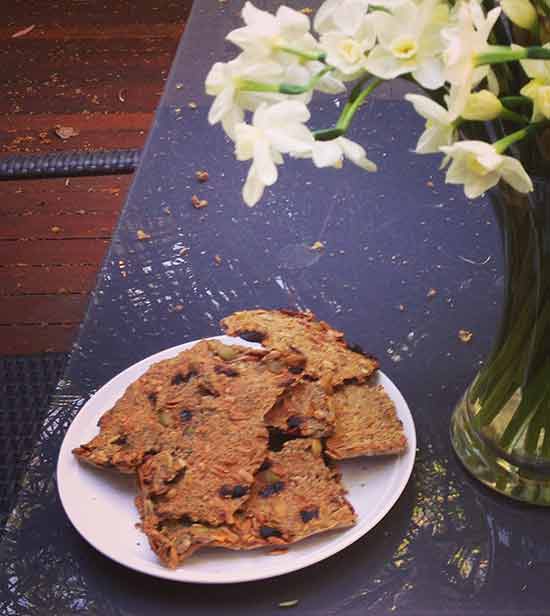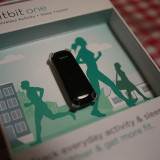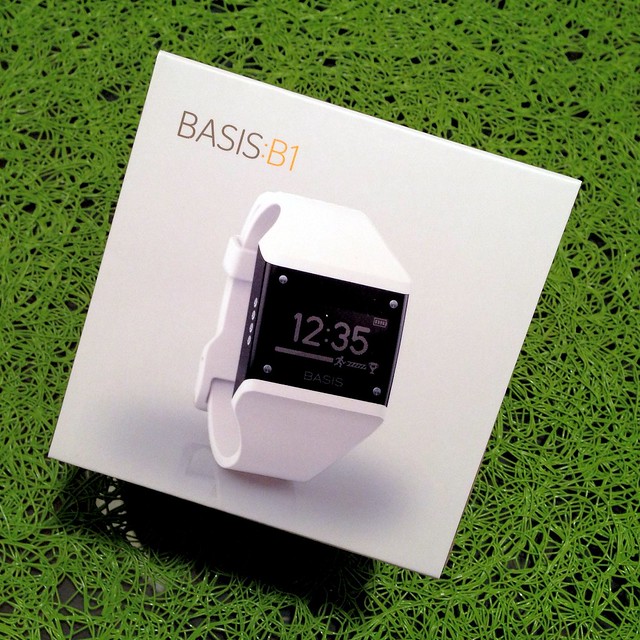Ahhh wholefoods. The word conjurs up images of blissfully sipping on roasted dandelion tea, plucking unrecognizable things from brown paper bags purchased in funny smelling stores and mindlessly stirring away at big pot of barley stew slow-cooking on the stove.
Wholefoods are for hippies, for people who can tolerate bland food, and for people who have a lot of time on their hands – not for a busy working (and hungry) woman, am I right?
Luckily, these outdated ideas about whole food eating are just that – outdated. I can’t remember the last time I bought anything from a store that smelt funny, I’ve tried dandelion tea once, and I don’t eat barley. Ever.
I do, however, love juicy lamb cutlets, I’ve recently discovered the joys of cold drip coffee, and you just try and take that brie from out of my hands. THIS is wholefoods.
In my world, there are plenty busy women who easily incorporate wholefoods into their lifestyle. They’re not some breed of superwomen – they’re just like you and me.
So where do you start? How much money will this cost? What if you try it and you don’t like it? What are ‘wholefoods’ anyway?
Wholefood eating isn’t as simple as “eat meat, don’t eat carbs.”
Wholefoods is not Raw, it’s not Vegetarian and it’s not Paleo. It’s not about low GI eating. It’s not a weight loss diet (although you might lose weight, and you can lose weight on wholefoods. Just ask Lola Berry).
A ‘whole’ food is one that hasn’t had too much done to it since it was pulled from good quality soil, plucked from a tree or came from an animal that fed happily and freely on grass before it was humanely slaughtered. There’s an absence of chemicals and anything else unnatural in its growth and processing. Wholefoods undergo natural processing that enhance the nutritional value of the food and improve the body’s ability to assimilate those nutrients– fermenting foods, soaking grains and legumes, and cooking at low temperatures.
A ‘whole’ food is one that hasn’t had too much done to it since it was pulled from good quality soil, plucked from a tree or came from an animal that fed happily and freely on grass before it was humanely slaughtered
The wholefood way naturally lends itself to the well-educated and the worldly because it requires ongoing thought, questioning and consideration.
Opting to go wholefoods could be the best thing you ever do for your health and the planet. Once you do away with the chemical concoctions commonly referred to as food in favour of real food, you can say hello to glowing and youthful looking skin, balanced hormones, better moods, regular toilet habits and weight maintenance without really trying (truly).
You could leap boldly with both feet into the world of wholefoods, but you’ll likely keel over within a week, having blindly wasted time, money and energy. Or you can accept my gentle offer of guidance and take, in this order, these 5 steps:
1. Adopt a wholefood mindset – know what wholefoods are and the positive impact that adopting a wholefoods lifestyle will have on your health
Wholefood eating starts first in the mind.
It begins by defining ‘food’ as something that should nourish the body, which should naturally lead to a search for the most nourishing foods, which will naturally lead you to focusing on the source and processing of produce.
That will make sense – eventually. My wholefood journey took five years to cultivate, and as my understanding has deepened, I’ve found it easier to make choices I once struggled with.
Visit the Weston A. Price Foundation website for a better understanding of wholefoods (Doctor Price is attributed with the return of wholefood eating), or read Sydney naturopath Anthia Khoullouros’s book I Am Food, and Sally Fallon’s Nourishing Traditions.
Stop obsessing over carbohydrate and fat count, but rather source and processing. Ask of everything you eat: “Where did this come from?” and “what has been done to it?”. Look for foods as close to their whole and natural state as possible, that have been processed in ways that nature lent a hand to, rather than a machine in a factory or a bunch of synthetic chemicals. Realise the toll mass produced convenience foods has taken on your body.
The more informed you are, the less “but I’m so busy” will be a valid excuse, and you will naturally make the time in your day and the room in your budget for wholefoods.
2. Get familiar with the basics
If you’re unfamiliar with wholefoods, chances are you’re unfamiliar with a lot of its basics – grass-fed meat, fermented vegetables and drinks, bone broths, soaked legumes and grains.
Bone broth is really simple. I overcomplicated it in the beginning, thinking there had to be more to it. There isn’t. Learn from my mistake.
For the busy woman, bone broth is actually a godsend because you don’t need to watch it while it’s cooking and then you can use it for so many things.
All it involves is simmering bones (without or without the flesh) in water for around 8-12 hours (or longer), to draw the minerals out of the bones. I leave mine on overnight. When refrigerated, the end result should look and feel like jelly (except for fish broth, which doesn’t gel). There are loads of recipes floating around online. I recommend starting with chicken, then moving onto red meats, then fish (I personally don’t do fish broth, but if you love fish stews and soups, you’ll be right into it).
Stop obsessing over carbohydrate and fat count, but rather source and processing
This will become a daily staple – you’ll drink it plain, you’ll use it as a base for soups, you might even just eat it like jelly. Die hard wholefood lovers have it for breakfast. I promise you, a chicken soup made with store bought stock will never taste the same again.
Why eat bone broth? Two words: “nature’s botox”. Bone broth is the Ultimate Super Food, providing a host of minerals in a form the body can easily assimilate. It’s also healing for the gut.
Fermented (or “cultured”) foods and drinks
We’re not talking the yoghurt that you buy at the supermarket here; we’re talking the real stuff. If you haven’t tried probiotic rich foods and drinks like home-made sauerkraut, kefir and kombucha before, now is not the time to try to make these at home – you’ll find it fiddly, time consuming and wonder what the heck it’s all for. Instead, visit a wholefood grocery store and buy a few different types to see what you like. Cultivate an appreciation for something fermented first. Eventually, you’ll be including something fermented at every meal.
Once you’ve become accustomed to reaching for these foods often, you’ll become resentful of the hole they’re leaving in your wallet. Now you’ll be motivated to learn how to make them yourself (for about a third of the cost!).
My tips: If you like soft drinks and iced tea, Kombucha is a wonderful introduction to fermented drinks. If you don’t have any dairy allergies, milk kefir is also a delicious start. If at first you don’t like a brand of fermented veggies, try others – they all taste very different.
3. Start with your budget and work back from there
Once you know all the foods typical to a wholefood diet, figure out what your wholefood diet looks like – the foods you’ll eat regularly and the foods you’ll decline. This is where budget comes into play.
You don’t need to blow out your budget with expensive cuts of meat every night to do wholefoods right; in fact, wholefoods can be a very budget-conscious way of eating because you’re encouraged to use every part of the produce.
A chicken soup made with store bought stock will never taste the same again
Once you’ve transitioned almost entirely over to wholefoods, your grocery bill will probably only be slightly more expensive than it is now. If it’s not, you can easily make it so by eating more offal meats, more fruits and veggies that are in abundance that season, shopping at farmers markets, joining a co-op and making more things at home. It’s in the transition period, when you’re mixing things up and you’re still buying your commercial cereal as well as your kombucha that things will be expensive.
Depending on where you live and your access to good wholefood stores, you won’t have to spend any more time in the kitchen than what you do now BUT know this: the more time you spend in the kitchen, the more money you will save. Only you can determine that trade-off.
4. Invest in the right equipment – these will become your best friends
By now you know what you’re regularly eating and enjoying, and most importantly, where you want to save money by making things at home.
Save yourself some serious time and energy by investing in the right equipment.
Wholefoods can be a very budget-conscious way of eating because you’re encouraged to use every part of the produce
To ferment veggies at home, use regular mason jars and a culture starter or go pro and purchase Pickl-It jars with an air-lock. I can’t recommend these jars highly enough – you’re virtually guaranteed to get a good, non-spoiled ferment every time.
Do a workshop (and there are plenty of them around) in cheesemaking, fermenting, sprouting – whatever it is that interests you – because it is the fastest way to learn how to do things yourself. The experts offer plenty of tips when it comes to equipment and ingredients for your budget.
5. Keep it fun –there’s a wholefood world waiting to be discovered!
Don’t get all bogged down with seriousness and don’t beat yourself up if you nipped off to Coles for your veggies this week – you’re only human and this is a journey.
Wholefood restaurants, cafes and bloggers are springing up all over the place, providing an endless source of inspiration for your own wholefood journey. Have fun exploring!
Featured photo credit: DPerstin via photopin cc
 Ilona Marchetta is a freelance writer and publicist who founded A Wholefood Lover’s Guide to Sydney in 2014.
Ilona Marchetta is a freelance writer and publicist who founded A Wholefood Lover’s Guide to Sydney in 2014.
Ilona’s wholefoods journey began in 2010 when she sought help from a macrobiotic counselor for lifelong digestive issues. Finding herself in better health than she had ever been, Ilona began a quest to learn more about the connection between diet and health, and the idea of food as medicine. It led her to the wonderful world of wholefoods.
When she’s not eating her way around Sydney, Ilona teaches women entrepreneurs how to write media releases and do their own PR.
 Melissa Madgwick
Melissa Madgwick











